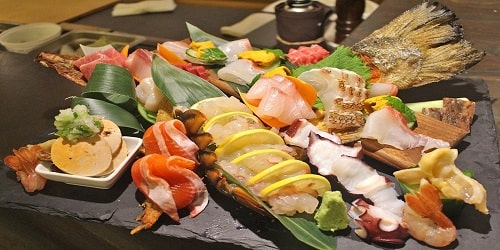The Japanese culinary tradition includes preparations as iconic and widespread as tataki and sashimi, which although at first glance they may seem the same, the truth is that they have clear differences between them.
For palates new to Japanese cuisine, it may seem strange to eat undercooked or even raw meat or fish. However, both preparations are increasingly present on the menus of bars and restaurants. Tataki and sashimi are two preparations that can confuse the consumer. Therefore, we will tell you the main differences between these famous dishes of Japanese and Eastern cuisine.
What is tataki
In addition to being the most well-known and widespread preparation, tataki itself is a cooking method that can be used to cook both fish and meat, and which basically consists of sealing the food on the outside at a high temperature, and in a short period of time. time. With this technique, what is achieved is that the inside of the food is very juicy, while a slightly charred layer is created on the outside.
What is sashimi
Sashimi, for its part, is one of the most delicate and subtle dishes in Japanese cuisine, consisting of a very fine cut of the product and made with mastery. Although it is generally made with fish, it can be made with red meat such as beef or ox and even white meat such as chicken. The peculiarity of this dish is that when it is served completely raw, you can taste the meat or fish in its purest and most natural flavor.
What are the differences between tataki and sashimi
To completely clarify both terms, we emphasize that although a priori a tataki and sashimi may seem the same, the truth is that they differ in a series of fundamental aspects. The main differences between both preparations, in addition to the cooking method, are the ingredients used, the type of cut of the piece, and of course, the texture and flavor.
Ingredients: fish sashimi, fish or meat tataki
First of all, we must be clear that tataki can be made of both fish and meat. The aquatic species most used to prepare it are tuna, salmon, and bonito. And as for meat, veal or ox are the ones usually used to prepare it.
Sashimi, on the other hand, is generally prepared with fish or seafood, and it is much less common (although not impossible) to prepare it with red meat such as beef. If we talk about ingredients from the sea, we highlight tuna and salmon, without forgetting fish such as sea bream, butterfish or mackerel. You can also prepare squid, shrimp or octopus sashimi.
Preparation: marinated or raw
As for tataki, the possibilities for marinating meat or fish are almost endless, since depending on the creativity of the cook, we can find the most original proposals. The most common thing is to prepare a marinade for fish or meat based on soy and ginger powder to which other spices such as pepper can be added. You can also have orange, lime or lemon juice, as well as olive oil.
If we refer to sashimi, as it is a completely raw cut of fish, it does not allow any type of marinade or dressing until the moment it is presented to the table, where each diner can season the meat or fish to taste.
Type of cut: sashimi, a little finer
Although served on the table they may seem very similar, tataki and sashimi are two types of cuts that differ from each other. The tataki is a generally rectangular piece, which is then served filleted in thin slices, leaving it juicy on the inside, and slightly toasted on the outside. As for sashimi, the cut is usually equally rectangular but sliced somewhat thinner than those of tataki.
Type of cooking: tataki, over high heat
Since sashimi is raw fish as such, it does not require any type of cooking, since it only requires a clean and fine cut before serving it on the table. If we refer to the tataki, in addition to being previously marinated with the ingredients mentioned above, the entire piece is cooked quickly in each of its four parts so that it is raw on the inside and retains the juices, and done on the outside.
Presentation and accompaniments: from soy to ponzu sauce
Sashimi is generally presented cut and placed in thin slices overlapping on the plate, accompanied with soy sauce, and for spicy lovers, with a little wasabi paste, as well as some slices of pickled ginger.
As for the tataki, after cooking, it is usually coated in sesame seeds, and whether it is prepared with meat or fish, it can be served with different sauces ranging from simple soy sauce to teriyaki sauce, or ponzu.
Flavor and texture: sashimi is more delicate
While sashimi is pure delicacy and softness in terms of texture, tataki is slightly crunchy on the outside due to the sesame coating, as well as very tender on the inside as it is not cooked inside.
Since it is not marinated or cooked, sashimi preserves all the flavor of the fish without altering. On the contrary, we find a wide variety of nuances in the flavor of tataki, from the marinade to the notes provided by the exterior braising, and the juices that remain inside the product.
